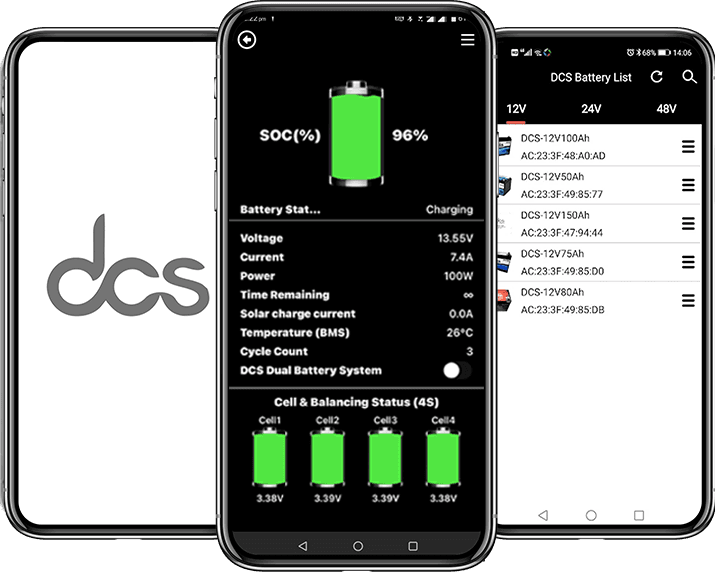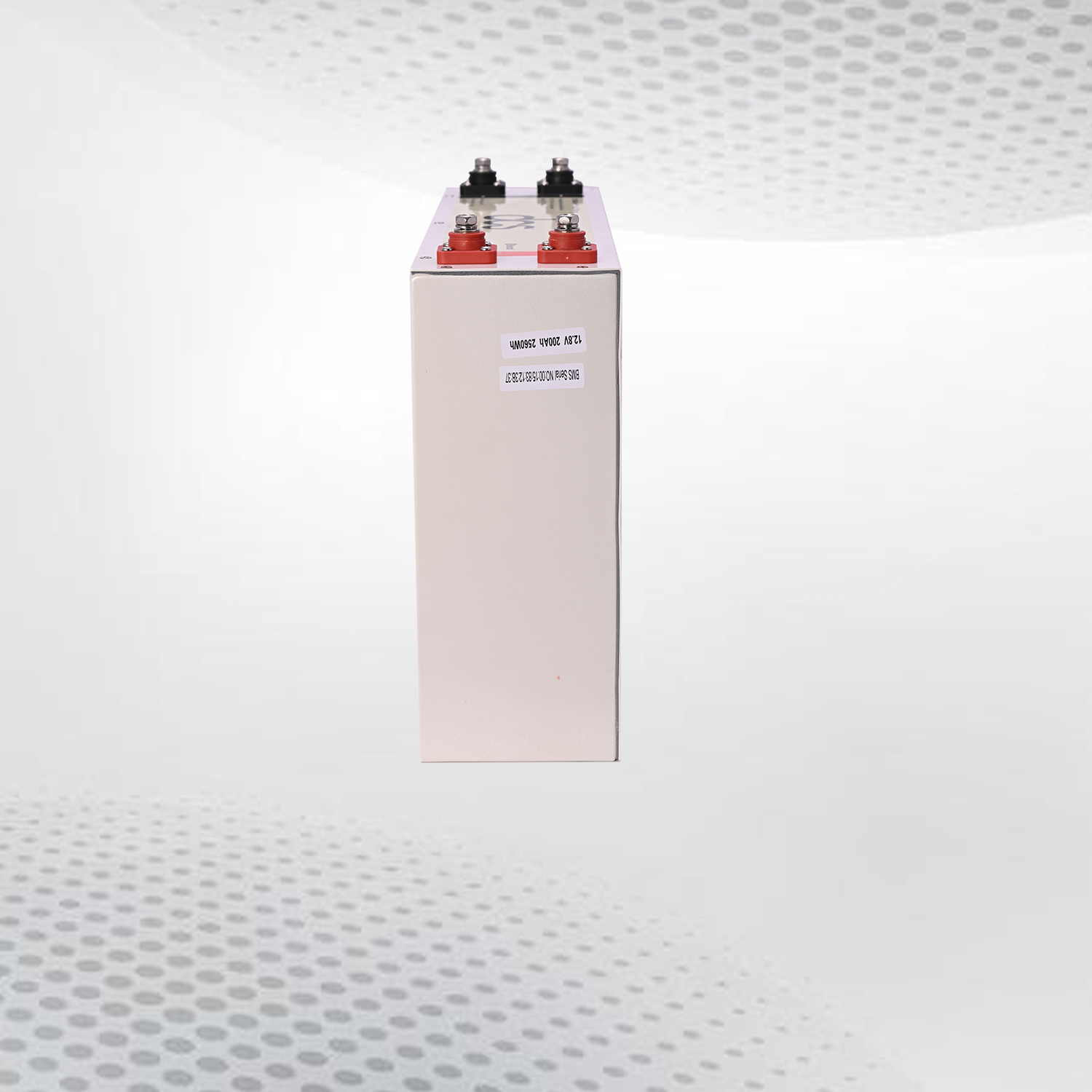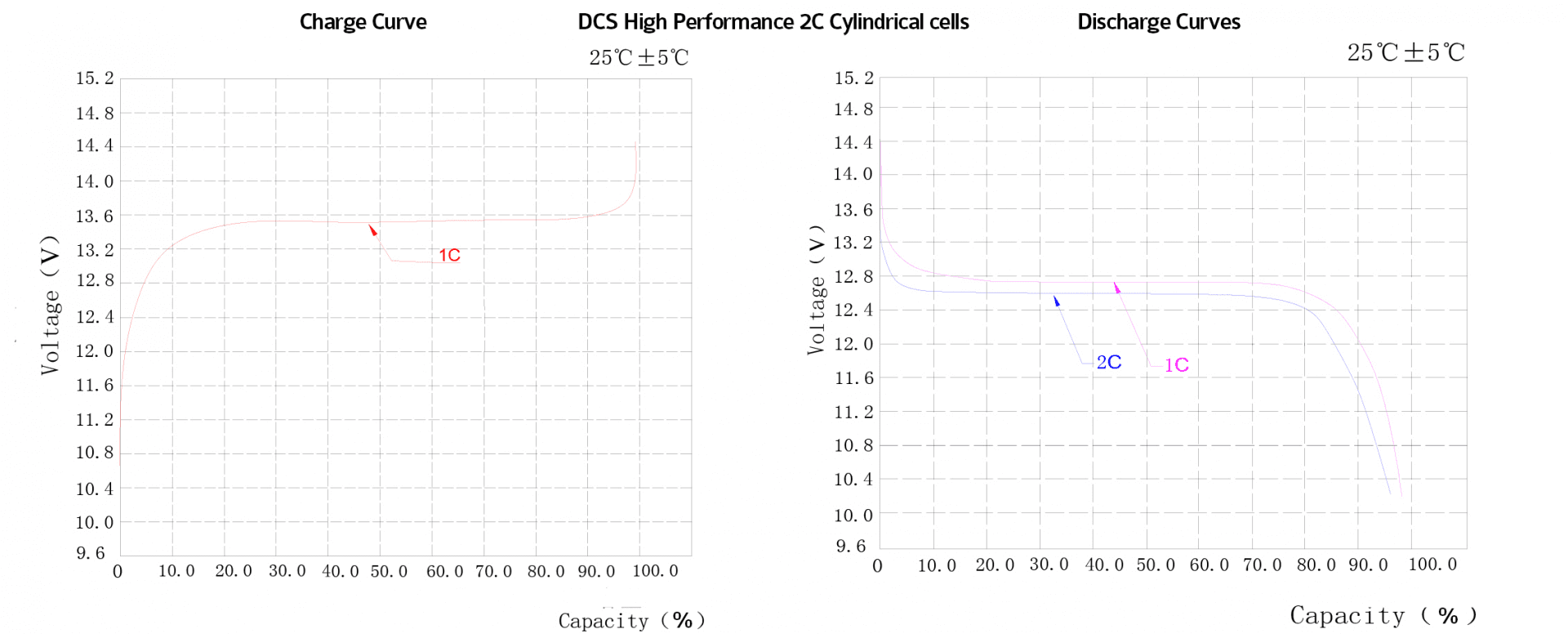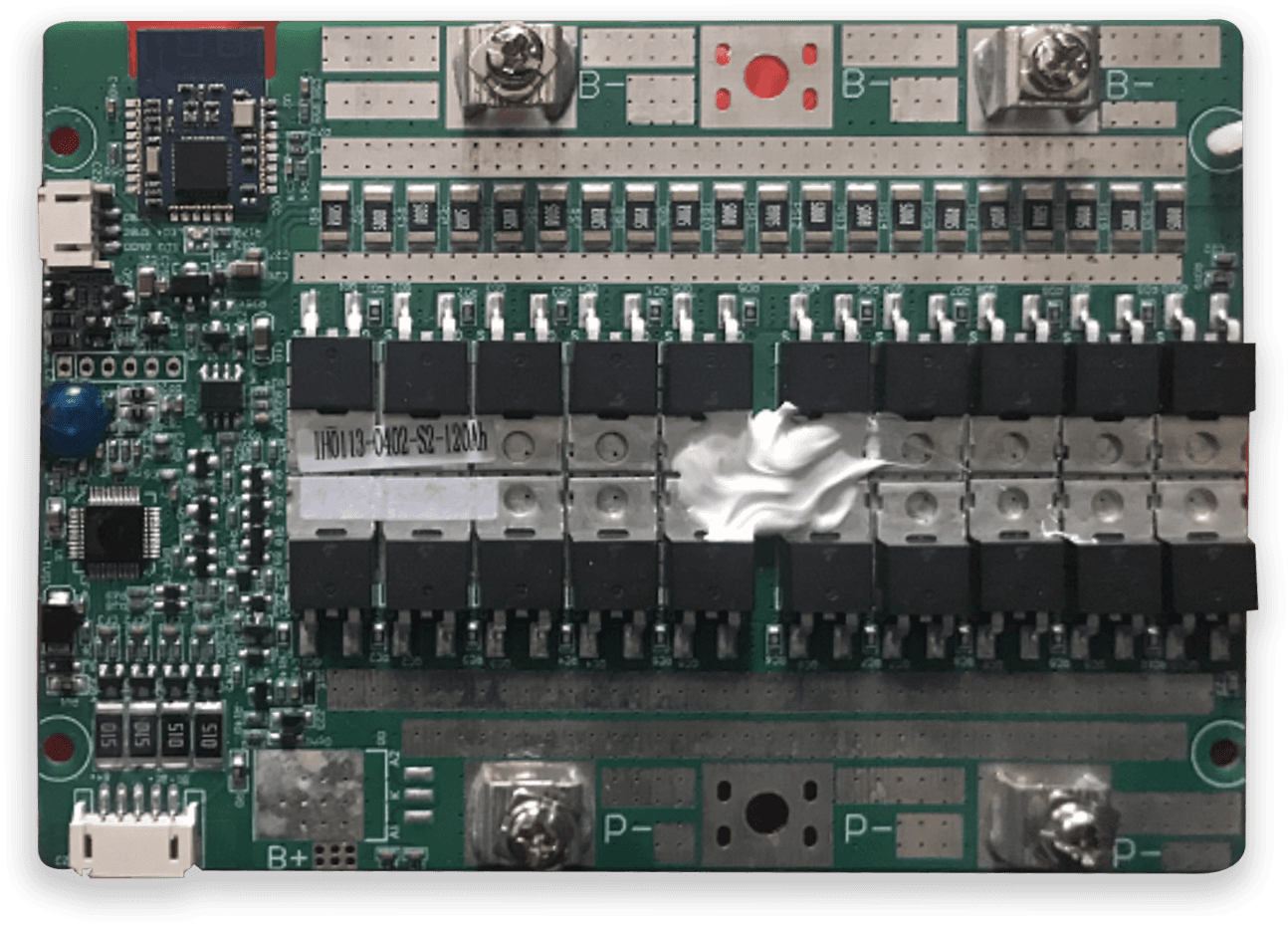Achieve Greater Solar Efficiency with Our User-Friendly Solar Controller 12v. Keep Your Solar Energy in Check with Our Solar Power Regulator 12v.
In the modern age, with improved technology, lithium batteries are no being mostly used for off-grid electric energy storage. If you are planning to install a solar system and want to mount lithium solar battery storage, you need to connect the lithium solar charge controller. Whether you are installing a new system or it is the old controller that got damaged, and now you want to replace it, Deep Cycle Systems has got you covered with the high-quality and reliable products that we offer at a very low price.
Lithium batteries are the most reliable and long-lasting energy storage solution in solar systems. When connected to a solar system, these batteries need charging to provide energy backup in the absence of sunlight. The solar charge controller’s job is to control the amount of charge produced by solar panels and transfer the voltage to lithium batteries for optimized charging. The charge controller is set in place because the 12v solar panels, in reality, produce approximately 14-16 volts. In contrast, the battery needs voltages in the range of 12.5-13.3 depending upon the battery type.
Deep Cycle System is a leading manufacturer of the solar charge controller. We ensure high-quality charge controllers. Our charge controllers are designed to provide dependable and long-lasting charge control while also properly managing your solar system. Deep Cycle Systems ensures that our valued customers receive top-notch chargers. Our solar charger ensures the smooth working of your solar system. Deep Cycle Systems is a market leader for providing reliable and durable solar charge controllers.
What is the Need for a Solar Charge Controller?
Solar cells are compact and produce energy efficiently. However, in order to achieve maximum and safe output, they must be controlled by a smart device. A typical solar panel produces 12 volts of electricity. In reality, this 12V photovoltaic panel produces 16 to 18 volts of energy, which is higher than the solar system’s capacity.
For a full charge, solar batteries only need 13.2 to 14 volts. However, because the solar panels create more electricity than is required, lithium solar regulators are installed to regulate the voltage. Therefore, batteries will only receive the exact amount of charge required.
MPPT as a Solar Charge Controller
MPPT means maximum power point tracking. This panel tracking follows the sunlight in real-time, thus enabling the solar panels to produce 15 percent more charging as compared to static solar panels. This feature is especially beneficial in winters when sunlight is for shorter intervals.
At Deep Cycle Systems, we do not just offer solar regulators but, we have a wide range of charge controllers available, and you can choose any of them according to the need and requirement of your installed system. Moreover,
- Our regulators come with Ultra-Fast Maximum Power Point Tracking.
- These charge controllers protect your battery from over-discharge as well as over-charge.
- Come with Intelligent battery management that helps in changing the algorithm depending on battery temperature.
- You can remotely monitor the battery status and control the algorithm with the help of your Bluetooth enabled smartphone.
- Our charge controller is highly durable and reliable. They can last for years come so you do not have to replace them too often.
Why Choose Deep Cycle Systems as Your Ultimate Energy Partner?
Deep Cycle Systems is a market leader in offering high-quality energy solutions to our devoted customers. Our customers benefit from Deep Cycle Systems’ high-quality energy solutions. For years, Deep Cycle Systems has been manufacturing and selling extended energy solutions. We can supply the highest quality energy solutions because of our expanded experience, field knowledge, and significant research and development.
Deep Cycle Systems provides a diverse range of energy solutions, including solar panels, solar systems, solar batteries, solar charge controllers, deep cycle batteries, and lithium batteries. We at Deep Cycle Systems offer one of the best energy solutions at affordable prices. Deep Cycle Systems provides reliable and durable energy solutions. Our energy solution products provide a long-lasting service life with rigidity in the field. Deep Cycle Systems offers expert installation services at your doorstep. Therefore, we are committed to enhancing your energy solution at every step, from purchasing energy solution equipment to hassle-free installation. Henceforth, we are one of the best energy solution providers for an extended range of energy solutions.
Deep Cycle Systems has a strong customer base as a result of our years as our products are made for extreme customer satisfaction. When you buy at Deep Cycle Systems, we ensure you are getting the best energy solution consultation. We provide expert consultation for homes, offices and businesses. Deep Cycle Systems is dedicated to one of the most durable and long-lasting energy solutions for all your needs.
Maximise Solar Energy Efficiency with Lithium Solar Charge Controller by Deep Cycle Systems
Deep Cycle Systems specialises in enhancing solar energy efficiency with our advanced Lithium Solar Charge Controllers. These controllers are crucial for managing the power your solar panels generate, ensuring optimal charging of lithium batteries. We focus on maximising energy harvest and protecting your battery life, thereby improving overall system efficiency. Our Lithium Solar Charge Controllers are designed to meet the high standards of solar power systems, providing our clients with reliable and efficient energy management solutions.
Lithium Solar Charge Controller – MPPT Vs PWM by Deep Cycle Systems
At Deep Cycle Systems, we offer both MPPT (Maximum Power Point Tracking) and PWM (Pulse Width Modulation) Lithium Solar Charge Controller. MPPT controllers are known for their efficiency in converting excess voltage into amperage, making them ideal for larger systems. On the other hand, PWM controllers are more cost-effective and suitable for smaller systems. We guide our clients in choosing the right technology based on their specific solar energy needs, ensuring optimal performance and efficiency of their solar power systems.
Smart Solar Battery Charger 12v Regulate Safe Battery Charging by Deep Cycle Systems
Deep Cycle Systems’ Smart Solar Battery Charger 12v is designed to regulate safe battery charging, ensuring the longevity and health of your solar batteries. Our smart charger meticulously controls the charging process, preventing overcharging and undercharging, which are common issues in solar battery systems. This regulation is essential for maintaining battery efficiency and lifespan, making our Smart Solar Battery Charger a vital component for any solar power setup.
Smart Solar Battery Charger Ensure Right Amount of Current is Passing to Your Battery Bank by Deep Cycle Systems
Our Smart Solar Battery Charger at Deep Cycle Systems is engineered to ensure that the right amount of current is passing to your battery bank. This precision in current regulation optimises the charging process and enhances the performance of your solar power system. We ensure that our Smart Solar Battery Chargers deliver a balanced and efficient charge to your batteries, maintaining their health and extending their lifespan, thereby providing a reliable and effective solar energy solution.
Solar Controller 12v Is Capable to Produce 15 to 40% more Power with Same Amount of Solar Panels by Deep Cycle Systems
At Deep Cycle Systems, our Solar Controller 12v is engineered to maximise power output, producing 15 to 40% more power with the same number of solar panels. This significant increase in efficiency means more energy is harvested from each panel, optimising the overall solar system performance. Our technology ensures that clients get the most out of their solar investment, enhancing both energy production and cost-effectiveness.
12v Solar Regulator – Smart and Intelligent Safety Features by Deep Cycle Systems
Deep Cycle Systems’ 12v Solar Regulator is equipped with smart and intelligent safety features, designed to protect your solar energy system. This regulator actively prevents overcharging, short-circuiting, and reverse polarity, safeguarding the integrity of your solar setup. We focus on delivering a product that not only efficiently manages solar energy but also ensures the longevity and safety of the entire system.
Solar Power Regulator 12v – The Under Voltage Restart Limit is 7.5 Volts by Deep Cycle Systems
Our Solar Power Regulator 12v at Deep Cycle Systems comes with a critical feature – an under-voltage restart limit set at 7.5 volts. This setting is crucial for maintaining battery health, as it prevents the battery from discharging too deeply. By setting this limit, our regulator ensures that your solar system operates within safe electrical boundaries, enhancing the lifespan of your batteries and the reliability of your solar power system.
Victron Solar Charge Controller 12v Is Efficient Even in Cloudy Weather by Deep Cycle Systems
Deep Cycle Systems offers the Victron Solar Charge Controller 12v, which is renowned for its efficiency even in cloudy weather conditions. This controller is adept at extracting maximum power in low-light scenarios, ensuring your solar system remains productive regardless of weather variability. Our Victron controller represents a reliable solution for maintaining consistent solar energy output in all weather conditions.
MPPT Solar Regulator 12v are Intelligent than PWM Solar Regulators by Deep Cycle Systems
Deep Cycle Systems offers the MPPT Solar Regulator 12v, a significantly more intelligent solution than traditional PWM solar regulators. Our MPPT regulators are designed to extract maximum power from solar panels by adjusting the electrical operating point of the modules. This intelligent tracking technology ensures higher efficiency and better performance, especially in varying weather conditions, making our MPPT regulators a superior choice for optimising solar energy systems.
Solar Controller 12v MPPT – The Multi-Stage Charging Maximise Battery Life by Deep Cycle Systems
Our Solar Controller 12v MPPT at Deep Cycle Systems features multi-stage charging, a crucial factor in maximizing battery life. This method ensures that batteries are charged efficiently and safely, extending their lifespan. The controller regulates the charge flow, preventing overcharging and ensuring the battery is maintained at optimal levels. This advanced charging technique is integral to maintaining the health and longevity of solar batteries.
Victron MPPT Solar Controller 12v Under Voltage Shutdown Limit is 7 Volts by Deep Cycle Systems
The Victron MPPT Solar Controller 12v, offered by Deep Cycle Systems, has an under-voltage shutdown limit set to 7 volts. This feature is critical for protecting batteries from excessive discharge, thereby preserving their capacity and health. Setting this shutdown limit ensures that the battery is safeguarded against deep discharges, which can significantly impact battery performance and lifespan.
Our Solar Controller 12 Volt is Designed to Minimise Energy Loss Through Wires by Deep Cycle Systems
Deep Cycle Systems’ Solar Controller 12 Volt is meticulously designed to minimise energy loss through wires. This feature ensures that the maximum amount of power generated by the solar panels is transferred to the batteries. By reducing energy loss in transmission, our solar controller enhances the overall efficiency of the solar power system, ensuring that clients get the most out of their solar investment.
The Algorithm of Solar Controller 12 Volt Works Earlier in the Day and Later in the Evening and Maximise Charging Time by Deep Cycle Systems
Deep Cycle Systems’ Solar Controller 12 Volt utilises a sophisticated algorithm that starts working earlier in the day and extends late into the evening to maximise charging time. This advanced feature ensures that solar energy is harnessed efficiently from dawn to dusk, enhancing the total energy yield. We focus on maximising the solar charge period, allowing for more extended and productive charging of batteries, which is crucial for maintaining a consistent energy supply.
Victron Solar Controller is Capable to Even Charge a Battery with Zero Voltage by Deep Cycle Systems
The Victron Solar Controller offered by Deep Cycle Systems is uniquely capable of charging batteries that have been discharged to zero voltage. This capability is critical in scenarios where batteries are deeply depleted. Our controller safely revives these batteries, restoring them to full functionality. This feature underlines the resilience and versatility of our solar controller, making it a reliable choice in even the most challenging situations.
Intelligent Victron Solar Charger Prevents Batteries from a Full Discharge by Deep Cycle Systems
Deep Cycle Systems provides an intelligent Victron Solar Charger that actively prevents batteries from being fully discharged. This protective measure is crucial for maintaining battery health and extending its lifespan. The charger intelligently monitors battery levels, intervening before a complete discharge occurs, thus safeguarding the battery against potential damage and ensuring its long-term reliability.
Victron Solar Charger – Set a Load Disconnect Voltage as Per Your Requirement by Deep Cycle Systems
Our Victron Solar Charger at Deep Cycle Systems allows clients to set a load disconnect voltage according to their specific needs. This customisable feature ensures that the load is disconnected at a safe voltage level, protecting both the battery and the connected devices. It offers flexibility in managing power usage, allowing for tailored energy solutions that meet individual requirements and conditions.
Victron DC to DC Charger with MPPT – Get Benefits of Adaptive 3-Stage Charger by Deep Cycle Systems
Deep Cycle Systems introduces the Victron DC to DC Charger with MPPT, featuring an advanced adaptive 3-stage charging process. This innovative charger maximises the efficiency of charging by automatically adjusting the charging stages – bulk, absorption, and float. This adaptive process not only ensures a faster charging rate but also significantly extends the battery life by preventing overcharging and undercharging. Our Victron charger is ideal for users who demand a high-efficiency charging process that adapts to their power needs, making it a top choice for diverse applications.
Victron DC to DC Charger with MPPT Works Under 55 Degree Celsius by Deep Cycle Systems
At Deep Cycle Systems, our Victron DC to DC Charger with MPPT is designed to operate effectively under temperatures as high as 55 degrees Celsius. This high-temperature tolerance ensures reliable performance in even the most demanding environments. We ensure that the charger maintains optimal functionality and safety standards, providing a consistent and efficient charge irrespective of external temperature conditions. This feature is crucial for applications in hot climates or in situations where the charger is exposed to high ambient temperatures.
The Benefit of Battery Charge Algorithm for Victron Solar Regulator by Deep Cycle Systems
Deep Cycle Systems highlights the benefits of the sophisticated battery charge algorithm in our Victron Solar Regulator. This algorithm tailors the charging process to the specific type of battery being used, whether it’s AGM, gel, lithium, or lead-acid. By adjusting the charging parameters to suit the battery’s chemistry, the regulator ensures optimal charging, prolonging battery life and enhancing overall system efficiency. This intelligent charging approach is key to maintaining battery health and maximising energy efficiency in solar power systems.
Victron Solar Regulator is NEN EN ISO 9001:2015 Certified by Deep Cycle Systems
The Victron Solar Regulator offered by Deep Cycle Systems proudly holds the NEN EN ISO 9001:2015 certification, a testament to its quality and reliability. This certification indicates that the product meets high international standards for quality management systems. We are committed to providing our clients with solar regulators that are not only efficient and effective but also adhere to rigorous quality standards, ensuring trust and confidence in their performance and durability.
Call Us Today
Order now or if you have any questions or want to know more about our products, you can contact us by giving us a call at, Tel: 1300-795-327. You can also email us at info@deepcyclesystems.com.au
”Close”






















